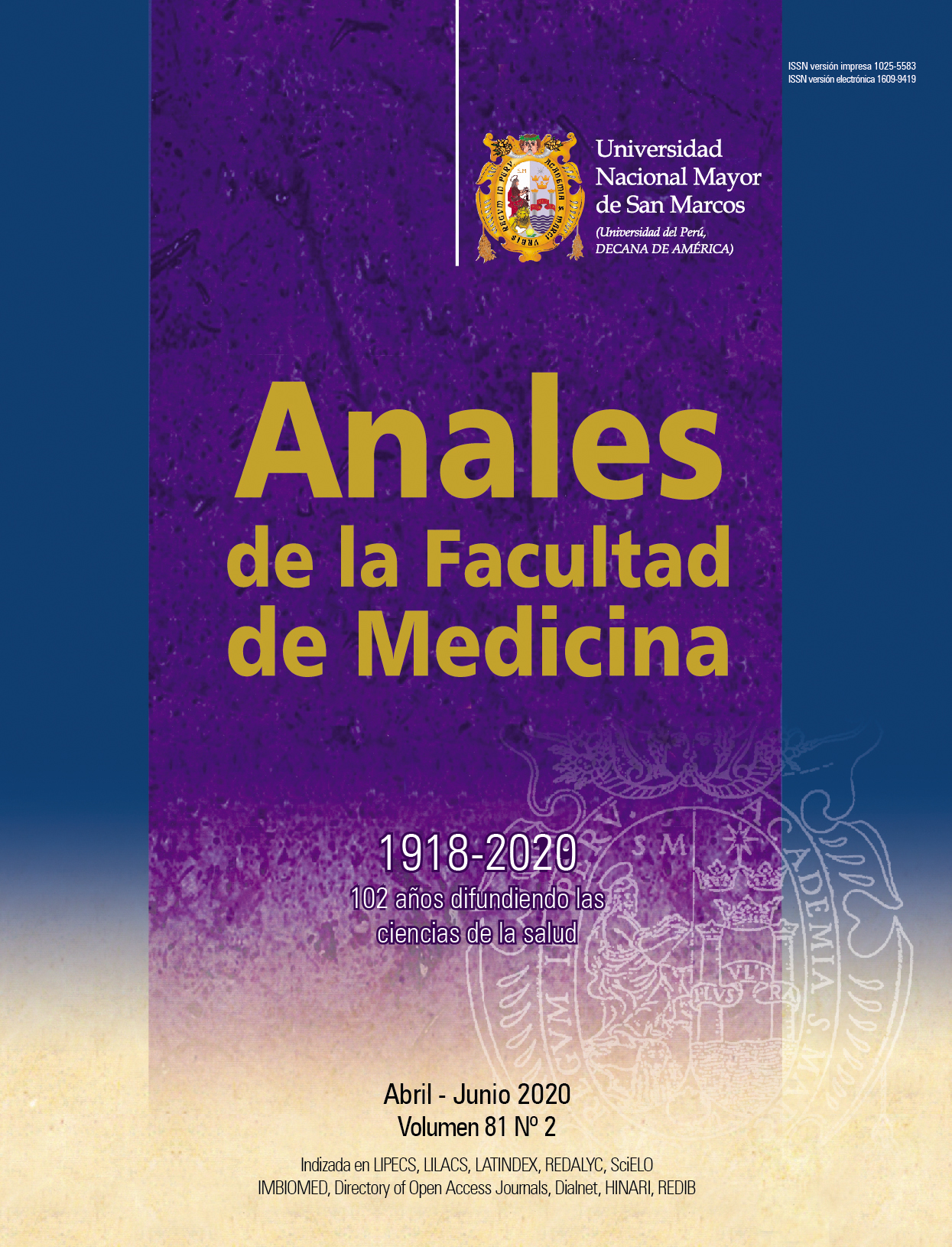Etiology and mechanisms of undernourishment in the cirrhotic patient
DOI:
https://doi.org/10.15381/anales.v81i2.18404Keywords:
Liver Cirrhosis, Etiology, Protein-Energy MalnutritionAbstract
The liver plays a role in the caloric homeostasis; it is involved in the digestive process, so it is not surprising to find malnutrition in cirrhosis, because they have an inability to meet their macro and micronutrient requirements. The pathogenesis of malnutrition is multifactorial and complex and frequently difficult to understand and includes reduced nutrient intake, decreased protein biosynthesis and increased loss, poor intestinal absorption, disturbances in the use of the substrate, abnormalities in the metabolism of carbohydrates, lipids and proteins and increased of pro-inflammatory cytokines resulting in a hypermetabolic state as well as increase in protein-energy expenditure and requirements. The evaluation of nutritional status is transcendental for a clinical-therapeutic approach, due to its influence on the prognosis and response to liver transplantation. Despite the evidence on the prevalence of malnutrition in liver cirrhosis, this condition remains poorly recognized, poorly diagnosed and poorly treated. It is controversial, if malnutrition can be reversed in cirrhotic; there is an agreement about the need to improve the food intake, avoiding limitations and restrictions that are not based on evidence.
Downloads
Published
Issue
Section
License
Copyright (c) 2020 Anales de la Facultad de Medicina

This work is licensed under a Creative Commons Attribution-NonCommercial-ShareAlike 4.0 International License.
Those authors who have publications with this magazine accept the following terms:
- Authors will retain their copyrights and guarantee the journal the right of first publication of their work, which will be simultaneously subject to Creative Commons Attribution License that allows third parties to share the work as long as its author and its first publication this magazine are indicated.
- Authors may adopt other non-exclusive licensing agreements for the distribution of the version of the published work (eg, deposit it in an institutional electronic file or publish it in a monographic volume) provided that the initial publication in this magazine is indicated.
- Authors are allowed and recommended to disseminate their work over the Internet (eg: in institutional telematic archives or on their website) before and during the submission process, which It can produce interesting exchanges and increase quotes from the published work. (See El efecto del acceso abierto ).















